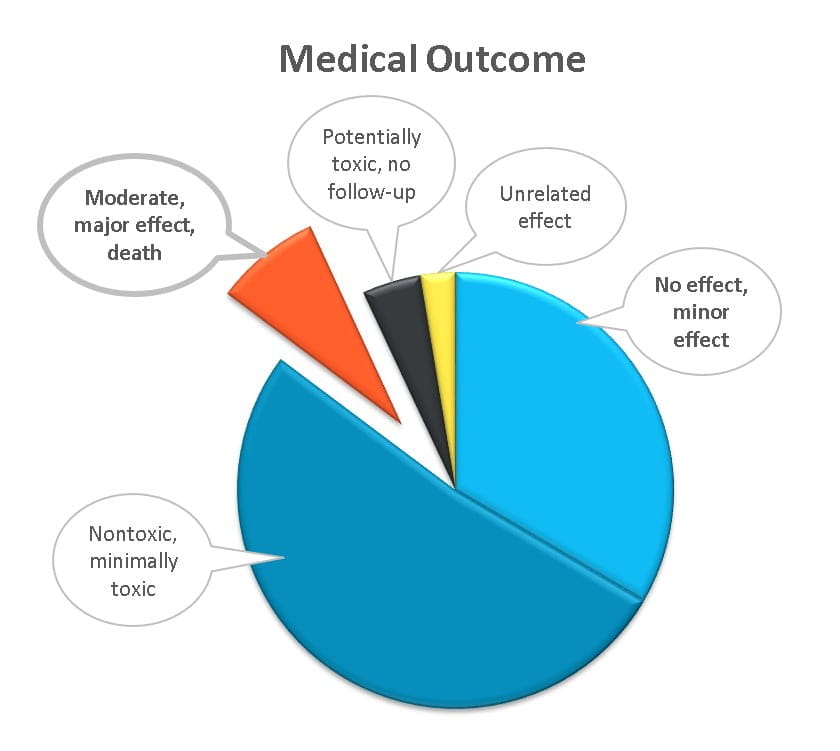Press Release, Button Battery Ingestion Incidents
| NATIONAL CAPITAL POISON CENTER NEWS RELEASE FOR IMMEDIATE RELEASE: November 10, 2016 |
|
| Deadly batteries: Number of serious button battery incidents still not decreasing
Washington, DC – Fatal and serious button battery incidents are still not decreasing. Data from the National Battery Ingestion Hotline for the 2-year period ending June 2016 show a rising number of button battery injuries caused by flameless candles. Last year more than 3,100 people of all ages swallowed button batteries. More than 1,900 were children. At least 20 fatal or major cases were in children younger than 6 years. "We pulled out all the stops after we first alerted the public and healthcare providers about the deadly dangers of button batteries" says Toby Litovitz, MD, Executive & Medical Director of the National Capital Poison Center, home of the 24-hour National Battery Ingestion Hotline at 1-800-498-8666. "Industry stepped up and made battery packaging child-resistant. UL implemented standards to secure the battery compartments of battery powered media devices, followed by additional standards covering other household electronics. Safety and medical groups issued warnings and a national Button Battery Task Force was founded to promote injury prevention. But still, six years after initially sounding the alarm, there’s no indication that the hazard is diminishing." "These are tragic, disastrous cases that are so difficult to treat" states Toby Litovitz about swallowed button batteries. "The trickiest part is that batteries stuck in the esophagus must be removed within just two hours to prevent terrible injuries. That's especially challenging when no one saw the child swallow a battery." Batteries caught in the esophagus generate a current that causes a chemical reaction. This burns right through the food pipe. The resulting perforations can leave children breathing and feeding through tubes for months or even years, often requiring multiple surgeries. Vocal cords may become paralyzed. Even worse, injury can extend into the aorta up to a month after a battery is removed, causing sudden and massive bleeding and near-certain death. Even "spent" batteries that no longer power a product have sufficient residual charge to seriously harm a child. In most cases, the "bad actor" is a 20 mm lithium coin cell, just a bit larger than a penny. It is commonly used because of its energy density and long shelf life. But it's a 3-volt cell, twice the voltage of the 1.5-volt traditional button cell, causing more alkali to form and producing injury much faster. That translates into less time to get the battery out before irreparable damage is done. National Battery Ingestion Hotline data show where and how the swallowed 20 mm lithium coin cells were mainly used over the past 2 years: 25% were intended for remote controls, 15% for lights, and 14% for flameless candles. Litovitz: "The latter is remarkable because we turn to these for a presumably safer alternative to an open flame." Other sources include games and toys, bathroom scales (right on your toddler's level), watches, key fobs, digital thermometers, 3-D glasses, Christmas ornaments, and many others. "In 54% of cases involving lithium coin cells swallowed by children under age 6, the child has removed the battery from the electronic device. The problem is that most parents are not even aware when it happens," says Litovitz. Litovitz: "We must find a way to protect children from this deadly hazard. Engineers are working to overcome the technical hurdles and develop a safer battery. Until then, it’s up to parents to be certain batteries are kept out of reach and all products in the home have a secure battery compartment. It’s up to the industry to secure product closures. And it’s up to parents and healthcare providers alike to suspect battery ingestions so batteries can be removed from the esophagus quickly, before serious damage is done." Tips for Protecting Young Children:
About the National Capital Poison Center The National Capital Poison Center, founded in 1980, is an independent, private, not-for-profit organization and an accredited poison center. Its nurse and pharmacist Certified Specialists in Poison Information provide 24/7 telephone guidance for poison emergencies, free of charge. It also provides online guidance for poison emergencies through the webPOISONCONTROL® tool, health professional education in toxicology, and poison prevention education. Service focuses on the metro DC area with a national scope for projects such as webPOISONCONTROL, the National Battery Ingestion Hotline at 1-800-498-8666, and The Poison Post®. The mission of National Capital Poison Center is to prevent poisonings, save lives, and limit injury from poisoning. In addition to saving lives, Poison Control decreases health care costs for poisoning cases. In 2015, the 55 U.S. poison control centers provided telephone guidance for nearly 2.2 million human poison exposures. |
Press Box
Data Analysis Published in AJEM Shows Power of Automated Poison Control Services
Poison Control Services Preserve Critical COVID-19 Healthcare Resources
webPOISONCONTROL® Provides Expert Help Online for Many More Poison Exposures
Digital Triage Tool webPOISONCONTROL® Launches Comprehensive Upgrade
Take Poison Prevention Seriously
Flameless Candles or Tea Lights
First Online App for Poison Emergencies
National Poison Prevention Week
Poisoned? Get Expert Help Online
Don’t guess what you should do. Get accurate answers prepared by poison control experts. This tool will guide you. It’s free. It’s confidential.
Support Us
Your donation to our 501(c)(3) organization enables us to help those who prefer to go online when faced with a poison emergency. Our webPOISONCONTROL online tool and app is a free, confidential, quick and easy way to get expert help. It has guided more than a million users faced with a poison emergency.
Learn the Poison Prevention Jingles
Learn the Poison Help jingle in English or Spanish. Use these jingles to teach the Poison Control number: 1-800-222-1222. Available for download.
Poison Statistics

